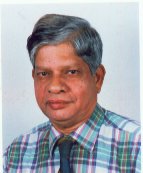Crude Alternatives: Energy Industry Heavyweights Debate Fuels of the Future: Scientific American With the world's energy demands expected to increase more than three-fold over the next century, ExxonMobil and Shell executives acknowledge the necessity (and difficulty) of unseating inexpensive and efficient crude oil and coal
By Larry Greenemeier September 28, 2010 0
Tuesday, September 28, 2010
Saturday, September 25, 2010
Reverse Combustion: Can CO2 Be Turned Back into Fuel? [Video]: Scientific American
Reverse Combustion: Can CO2 Be Turned Back into Fuel? [Video]: Scientific American In the 1990s a graduate student named Lin Chao at Princeton University decided to bubble carbon dioxide into an electrochemical cell. Using cathodes made from the element palladium and a catalyst known as pyridinium—a garden variety organic chemical that is a by-product of oil refining—he discovered that applying an electric current would assemble methanol from the CO2. He published his findings in 1994—and no one cared.
Friday, September 24, 2010
Out-of-this-world proposal for solar wind power - tech - 24 September 2010 - New Scientist
Out-of-this-world proposal for solar wind power - tech - 24 September 2010 - New Scientist Forget wind power or conventional solar power, the world's energy needs could be met 100 billion times over using a satellite to harness the solar wind and beam the energy to Earth – though focussing the beam could be tricky.
Thursday, September 23, 2010
Gas diffusion layer for fuel cells made of carbon fiber fabric
Gas diffusion layer for fuel cells made of carbon fiber fabric Toho Tenax Co. Ltd., the core company of the Teijin Group's carbon fibers business, has developed a gas diffusion layer (GDL) made of a carbon fiber fabric for use as an electrode component for fuel cells.
World's Largest Wind Farm Opens in U.K.: Big Pic : Discovery News
World's Largest Wind Farm Opens in U.K.: Big Pic : Discovery News Sept. 23, 2010 -- The world's largest offshore wind farm opened in Britain on Thursday, as part of the government's bid to reduce the carbon emissions that drive climate change.
Monday, September 13, 2010
Born-again solar cells are more efficient - tech - 11 September 2010 - New Scientist
Born-again solar cells are more efficient - tech - 11 September 2010 - New Scientist Plants counteract the damaging effects of the sun by constantly rebuilding their photosynthetic parts. To mimic this, a team led by Michael Strano at the Massachusetts Institute of Technology created a solar cell using light-harvesting proteins, lipids and carbon nanotubes. These stick together and the nanotubes channel electrons generated by the proteins to an external circuit.
Subscribe to:
Posts (Atom)




